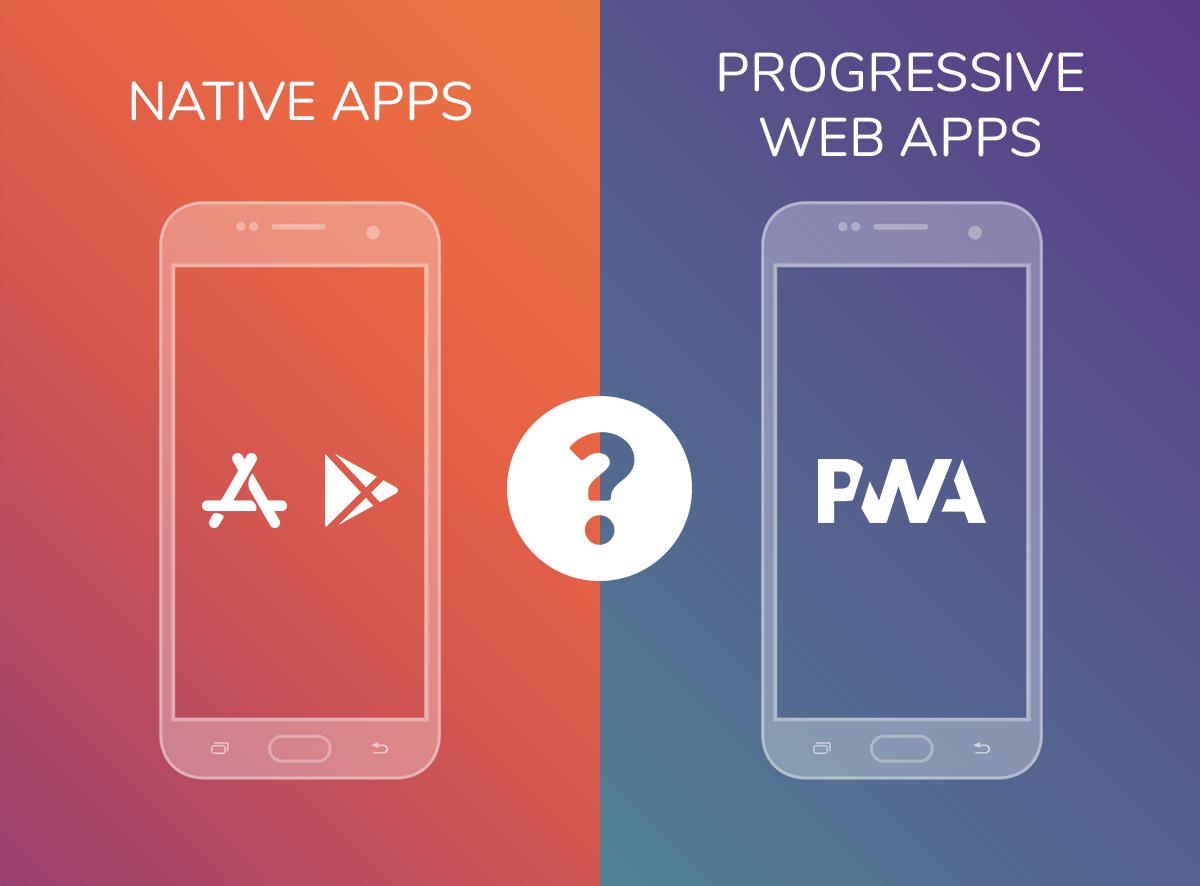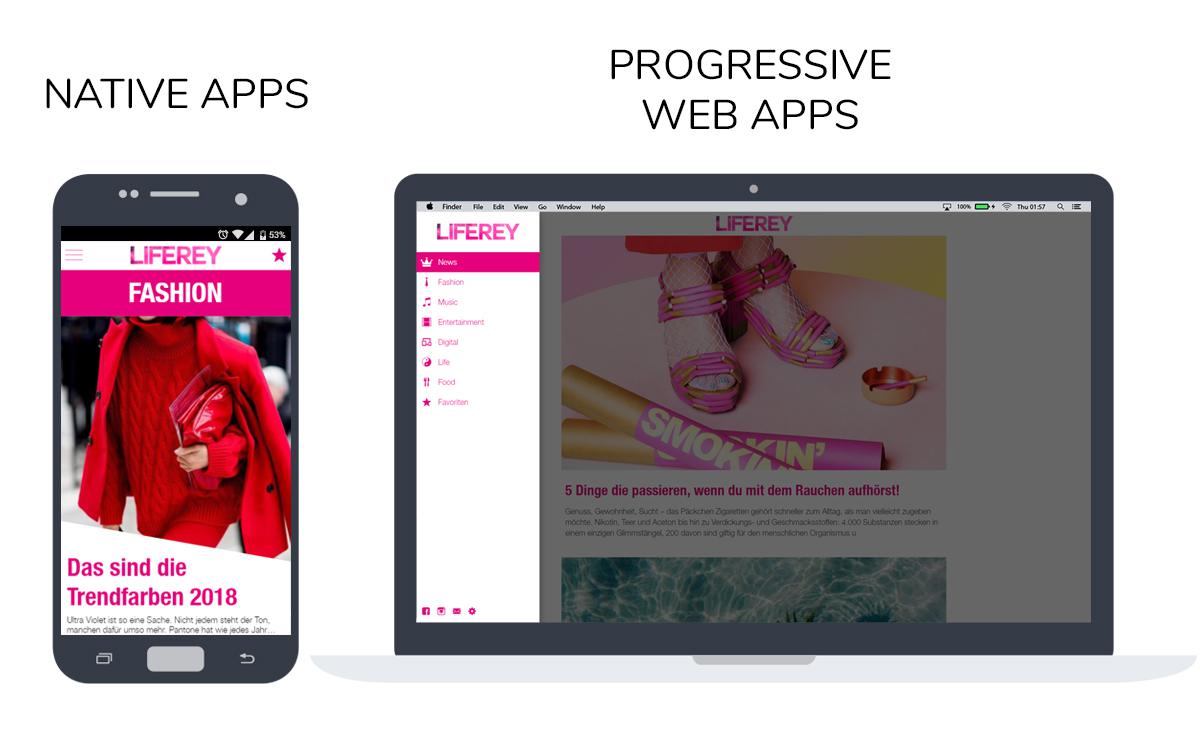To make a PWA or a Native app?
Written by GoodBarber Team on
PWA vs Native apps 2022: which best suits your needs ?

Native apps vs Progressive Web Apps
Native APPS vs PWA :
| FEATURES | NATIVE APPS | PWA |
| Functionality | 1 | 0.5 (Full on Android only) |
| Geolocation | 1 | 0 |
| Discoverability | 0 | 1 |
| Effort required to access | 0 | 1 |
| Amplification | 1 | 0 |
| Device discrimination | 0 | 1 |
| Bureaucracy | 0 | 1 |
Functionality on iOS—1 point for Native
Functionality on Android—1 point for Native & PWA
Geo-location features—1 point for Native
Discoverability—1 point for PWA's
Effort required to access—1 point for PWA's
An important point to consider when first launching an app for your project is 1) how on board with you you believe your users/potential users are, and 2) what the proportion of need for your content is to time and effort users are willing to put forth to get to it.
For example, if you have a restaurant and the main purpose of your app is to display a menu and take reservations, do you believe your potential customers’ course of action to view your menu is to go to an app store and download something onto their devices? Chances are, they’re much more likely to do a quick search engine query to avoid wasting time and storage space. In the case of returning customers who have a frequent need to visit your app, a PWA can always be added to their device’s home screen for instant access.
There are definitely certain projects where the user base won’t hesitate to spend their time and storage space on a native app, but if you’re still trying to get a gage on your audience’s behavioral patterns, a PWA is a good way to test the waters before diving in and missing out on potential visitors.
Amplification—1 point for Native
Device discrimination—1 point for PWA's
Bureaucracy—1 point for PWA's
Last but not least. Publishing a native app means agreeing to undergo and comply with third party regulations , reviews, and fees. Initially publishing your app will require you to pass the “standards” set by the app stores in terms of design quality, code, and most importantly, content (if any content in your app isn’t in line with the store’s image/culture, they can refuse to publish your app). This is also true for your app’s future as well, meaning that if you try to make an update to your app that somebody doesn’t agree with, you’re subject to being booted from that marketplace at any time.
Additionally, there are fees associated with being present in stores that don’t exist when publishing on the web (such as developer accounts and review fees). The clear winner in terms of cost and hassle here is the PWA, with its instant, virtually cost and scrutiny free publishing process.
